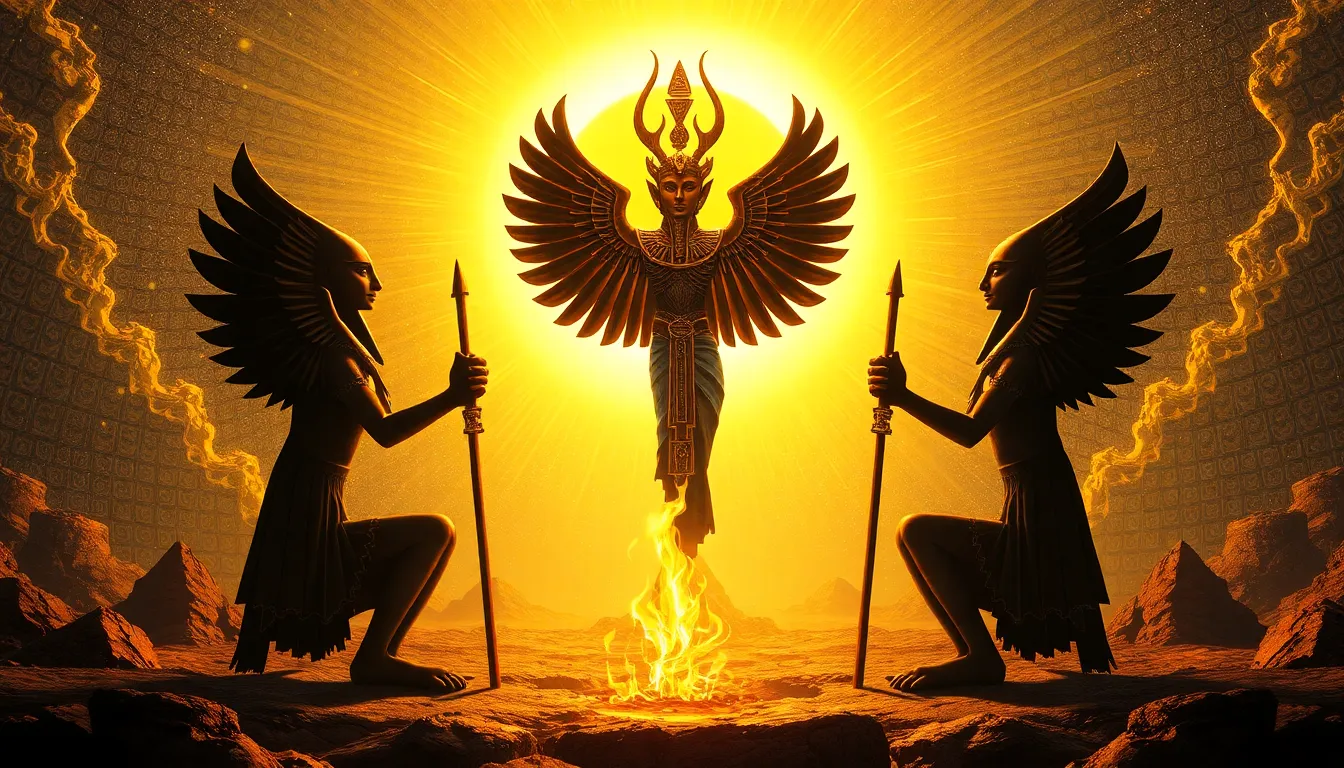The Myth of Osiris: Death and Rebirth in Egyptian Cosmology
I. Introduction
Egyptian cosmology is a rich tapestry of myths and beliefs that shaped the lives of the ancient Egyptians. It encompasses the creation of the world, the nature of the gods, and the cycle of life and death. Among these deities, Osiris stands out as a central figure, embodying the themes of death, resurrection, and the eternal cycle of life. This article explores the myth of Osiris, delving into its significance within Egyptian cosmology and the profound themes of death and rebirth that resonate throughout the narrative.
II. The Origins of Osiris
Osiris was born to the sky goddess Nut and the earth god Geb, making him a crucial element of the divine hierarchy. His early life was marked by a deep connection to agriculture and civilization, as he was revered as the god of fertility and harvest.
- Birth and early life of Osiris: Osiris was one of four siblings, including Isis, Set, and Nephthys. His upbringing emphasized the importance of agriculture, and he was often depicted as a benevolent ruler who taught humanity the arts of farming and civilization.
- Osiris as the god of agriculture and civilization: He represented the cycle of growth and decay, essential for sustaining life, and was celebrated during harvest festivals.
- Relationship with Isis and Set: Osiris’s love for his sister Isis cemented their bond as a divine couple, while his brother Set’s jealousy foreshadowed the tragedy to come.
III. The Tragedy of Osiris
The myth of Osiris takes a dark turn with the betrayal of his brother Set, who coveted Osiris’s power and position. This betrayal leads to a series of tragic events with far-reaching consequences.
- The betrayal by Set: Set, embodying chaos and disorder, plotted against Osiris, seeking to usurp his throne.
- The murder and dismemberment of Osiris: In a heinous act, Set killed Osiris and dismembered his body, scattering the pieces across Egypt.
- The impact of Osiris’s death on the cosmos and humanity: This act of violence plunged the world into chaos, representing the struggle between order and disorder.
IV. The Role of Isis and the Resurrection
Isis, the devoted wife of Osiris, embarked on a perilous quest to recover her husband’s body, showcasing her unwavering love and determination.
- Isis’s quest to recover Osiris’s body: Using her magical powers, Isis searched tirelessly for the scattered remains of Osiris.
- The significance of her rituals and magic: Isis performed intricate rituals to resurrect Osiris, emphasizing the power of love and devotion in overcoming death.
- The resurrection of Osiris and its implications for life after death: Osiris’s return marked the triumph of life over death, establishing him as a symbol of resurrection and hope.
V. Osiris as the God of the Underworld
Following his resurrection, Osiris transformed into the ruler of the underworld, taking on a new role that further solidified his importance in Egyptian belief.
- Transformation of Osiris’s role post-resurrection: No longer just a god of agriculture, Osiris became the judge of the dead, overseeing the afterlife.
- The symbolism of Osiris as a judge of the dead: He was depicted weighing the hearts of the deceased against the feather of Ma’at, determining their fate in the afterlife.
- Connection to the afterlife beliefs in ancient Egypt: Osiris’s role emphasized the importance of living a just and virtuous life to ensure a favorable judgment after death.
VI. Themes of Death and Rebirth
The myth of Osiris is imbued with profound themes of death and rebirth, reflecting the cyclical nature of existence.
- Symbolism of death and rebirth in the Osiris myth: Osiris’s death and resurrection symbolize the eternal cycle of life, death, and rebirth that permeates nature.
- Parallels to agricultural cycles and natural renewal: Just as Osiris is associated with the growth of crops, his resurrection parallels the seasonal cycles of planting and harvest.
- Cultural significance of these themes in Egyptian society: The themes of death and rebirth resonated deeply with the ancient Egyptians, influencing their funerary practices and beliefs about the afterlife.
VII. Influence of the Osiris Myth on Egyptian Religion and Culture
The impact of the Osiris myth extended beyond mythology, shaping religious practices and cultural expressions throughout ancient Egypt.
- Worship practices and temples dedicated to Osiris: Numerous temples were erected in his honor, where rituals and offerings were made to secure his favor.
- Osiris in funerary texts and rituals: The “Book of the Dead” and other funerary texts frequently reference Osiris, underscoring his role in guiding souls to the afterlife.
- Lasting legacy of the myth in later cultures and religions: The themes of Osiris’s death and resurrection influenced later religious thought, including concepts of resurrection in Christianity.
VIII. Conclusion
Osiris’s importance in Egyptian cosmology cannot be overstated. His myth encapsulates the fundamental human experiences of death and rebirth, offering insight into the ancient Egyptians’ understanding of existence. The enduring nature of the Osiris myth continues to resonate, reminding us of the cycles of life that define our human experience. Through the lens of Osiris, we reflect on the themes of death and resurrection that remain relevant across cultures and generations.




